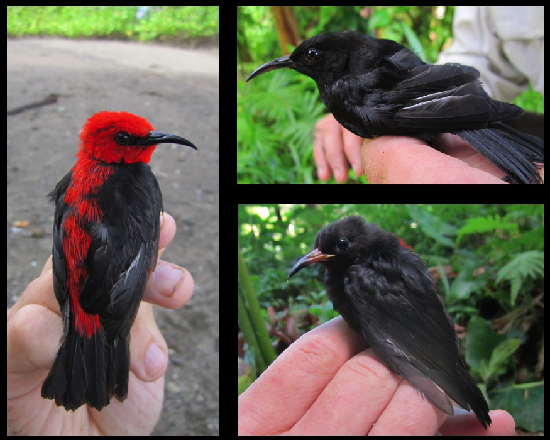
| |
| Home |
| Research |
| Publications |
| People |
| Teaching |
| Field Course |
| Conservation |
| Outreach |
| Adventures |
| Opportunities for students |
| Contact |
RESEARCH PROGRAM |
| HYBRIDIZATION, NEO-SEX CHROMOSOMES & SPECIATION IN ISLAND HONEY-EATERS |
When recently formed species come into secondary contact, the dynamics of their interactions provide rare insights into the early stages of species formation. Two species of Myzomela honeyeaters have come into secondary contact within the past 100 years on Makira Island of the Solomon Archipelago. Museum collections over the past 100 years suggest that the incidence of hybridization has gone down over the years, suggesting the possibility that natural selection has acted against hybridization since the two species have come into contact. Using a combination of genetic/genomic approaches with field observations and experiments, we are exploring the ecology and genomics of hybridization in this complex. Remarkably, we recently found that a neo-sex chromosome may play a role in plumage divergence and speciationin this group. This formed Jason Sardell's dissertation research, and is now a long-term collaboration funded by NSF between the Trop Bio Lab and the Presgraves Lab at UR. |
 |
| Clockwise from left, Myzomela cardinalis, M. tristrami and a putative hybrid (note red feathers on nape/collar) of Makira. |
| Back to Current Research Page |
| Back to Uy Lab Home |
|